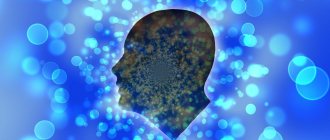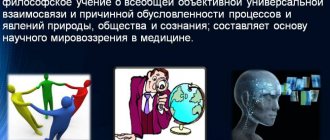General terminology
The term introspection comes from the Latin word introspecto, which translates as “to look within.” Introspection is a method of conscious self-observation, that is, these are equivalent concepts, and both are used in psychological research.
The method of introspection is indeed very important, since with its help you can learn to perceive the real world in depth, and then intuition and consciousness will open up to a person. People suffering from schizophrenia have excessive introspection; they replace reality with the inner world.
The method of introspection in psychology is used to observe one’s own processes, one’s own thoughts, experiences, feelings, attitudes, images. The method was founded in psychology by J. Locke.
Introspection is introspection, in which the person himself does not strive for self-judgment, which is why the method differs from remorse.
Functions and role
Throughout his life, each person experiences different feelings:
- pain;
- offense;
- joy;
- astonishment;
- indignation;
- hatred;
- Love.
Psychologists are interested in what they are and what a person experiences when they experience them. This is an attempt to explore consciousness as a physical object.
An important function of self-knowledge is studying oneself as an individual and knowing one’s goals in life.
Introspection in psychology is the study of the content of one’s self (narrow meaning) and understanding of what a person wants to achieve in the future, what he is striving for (broad meaning).
The use of this method in a narrow sense allows you to know your character traits, feelings that are relevant at a particular moment, intellectual capabilities, thinking characteristics (attention, memory, concentration), etc.
This is important for understanding many things, for example, for choosing a future profession. When choosing a specific profession, it is important to know how much a person has developed the personal qualities to master it. Assessing your own abilities in your chosen field will help you adjust the level of some qualities that are necessary to become a professional.
A person has to communicate with different categories of people throughout his life. His position in society largely depends on this. Therefore, the role of self-knowledge is especially important for the development of communication skills and the ability to get out of difficult conflict situations. This is also important in choosing a life and work partner.
During self-knowledge, it is necessary to set specific goals and adhere to the principle “I want - I can - I must.” Having answered the questions “What do I want?”, “What are my capabilities?” and “What do I need in order to achieve what I want?”, the individual expands the boundaries of knowledge of his own Self.
Psychologists note that the goals of introspection can be real and unrealistic. In the first case, the person analyzes what actually takes place (the qualities inherent in nature), in the second, he tries to record what does not exist.
If it really turns out that a person does not have any quality or it is not sufficiently developed, then self-knowledge can serve as a starting point for further work on oneself.
Thus, introspection becomes a stimulus for improvement.
This method has huge advantages:
- with its help, any person can know himself better than anyone else;
- awareness of the level of development of one’s qualities is reliable from an epistemical point of view;
- a person can regulate his mental states.
The difference between introspection and other methods of cognition is that it provides a person with direct access to the object of study.
Story
Introspection was identified as a separate method in the works of Rene Descartes. He pointed to a certain nature of knowledge of his own soul and mind. John Locke divided human experience into internal, which concerns the activities of the mind, and external, which is aimed at the external world.
Wilhelm Wundt combined introspection with laboratory methodologies, and introspection became the main method for studying psychological states. But at the beginning of the 20th century, due to the emergence of new trends in psychology, this method was declared unscientific, highly subjective and idealistic.
But, despite this, introspection continued to be present in the research of psychologists in the form of introspection and other techniques for studying a person’s spiritual life.
Introspection and Philosophy
Introspection in philosophy is a way of self-observation. It helps to consciously free oneself and determine the feelings that rage within a person. But too much introspection and introspection can provoke the development of a suspicious attitude towards other people and towards the whole world.
Introspection in philosophy is the basis of psychological methodology. It is aimed at observation, cognition, study, and not the search for positive and negative. Philosophers engaged in this direction: J. Locke, T. Hobbes, J. Mill, J. Berkeley, D. Hume. They all considered consciousness to be the result of internal experience, and the presence of experiences and feelings in a person, in their opinion, indicate knowledge.
In other words, everything that we use and consciously understand is the result of our inner world, which is formed from birth. To understand why we have certain traits and become just such a person, we need to start with self-knowledge, without the need to evaluate ourselves and resort to criticism.
The place of method in philosophy
In philosophy, introspection is the basis of the psychological methodology of the retrospective direction of this science. The essence of Augustine's method of introspection is to free the mind and systematize a person's feelings, which his students agreed with. Preoccupation with one's own emotions can interfere with normal interpersonal relationships.
Description of the method
Introspection is very useful in a person’s knowledge of himself and his activities. This method is practical and does not require additional standards or tools. Its most significant advantage over other methods is that no one in any way can get to know a person better than he knows himself.
The method is very good because a person only needs his own help and desire. He must want to know himself and devote time to this.
But the method also has disadvantages, the most serious of which are:
- Bias - a person can exaggerate, embellish or not notice some features, distorting the picture of what he sees in himself.
- Subjectivity - a person perceives his inner world as he really wants to see it, that is, he can hide some aspects.
Adults, as Locke believed, perform the following basic actions:
- Knowledge of the surrounding reality.
- Processing information received from this reality.
Children are generally not able to carry out introspection, since their psyche is not sufficiently formed.
Introspection: use in modern psychotherapy
It would be wrong to say that introspection has been completely removed from modern psychology. This method is still used in psychotherapy. Moreover, using an understanding of your psyche can bring particularly good results. Through introspection, the patient can analyze what causes a particular behavior pattern (for example, where his vulnerability to conflict in relationships comes from), and then, with the help of psychotherapy and the help of a specialist, change his thinking accordingly and solve the problem.
It can be said that introspection is a valuable tool for every person. We usually don't have time to think about why something really annoys us, why we feel insecure in certain situations (like our significant other's friends), or why we're in relationships that don't satisfy us. By taking some time to look at yourself from the outside, you can not only understand feelings, emotions and decisions, but even change your own approach to various aspects of life and begin to live in harmony with yourself.
Kinds
Psychologists distinguish several types of introspection:
- Analytical - drawing up a picture occurs on the basis of a set of sensations that are formed during introspection. This is the perception of things and objects through the senses.
- Systematic is structuring, awareness and understanding of internal processes.
- Phenomenological introspection is a description of the integrity and immediacy of phenomena.
The main disadvantage of introspection is that the process can be carried out by one person. And even during experimental introspection, psychologists cannot monitor how correctly a person draws conclusions and uses the method.
That is why the method helps to collect data, but it cannot be interpreted, evaluated, or separated.
Introspection, or observation, is carried out over the simplest processes of the psyche: associations, sensations, ideas. The advantage of the method is that there is no need for a report; only self-observation is necessary, which will then be analyzed.
Self-observation and psychology
Previously, this method was considered not only the main, but also the only one. Introspection in psychology is a method of introspection, study and analysis of mental processes. That is, it is observation of the functioning of one’s own psyche.
The introspection method in psychology has some features:
- It can only be carried out by one person.
- Self-observation requires long-term practice in it.
- Consciousness reflects the cause-and-effect relationship in psychological processes.
At the end of the 19th century, psychology conducted a huge experiment that tested the capabilities of introspection. It was not the facts of consciousness that were studied, but laboratory studies that were carried out under certain conditions and circumstances.
The most rigorous psychologists complicated their experiments with additional requirements. They sought to highlight the most elementary elements of consciousness - feelings and sensations. Over time, great difficulties arose in the experiments. The method began to be recognized as inappropriate due to subjectivity. The results of the experiments were contradictory, even among the same researcher when working with different subjects. In addition, the same test subject had different results after some time.
The basic principles of the science of psychology were also questioned. During the experiments, elements of consciousness were revealed that could not be broken down into feelings. In addition, the constant use of the method revealed non-sensory elements of human consciousness, and unconscious causes of certain phenomena began to be discovered.
There is a crisis in psychology. The practice of applying the method and its discussion revealed a number of specific shortcomings, which turned out to be so serious that scientists questioned the method itself and the subject of psychology, which at that time was closely related to the method of introspection.
Advantages and disadvantages of the method
The advantages of this method are the following facts:
- the method is based on the study of one’s own internal sensations and personal attitudes (no one else can know these features better than the subject himself);
- it presents mental facts as they exist.
However, the listed advantages of the method do not make it ideal. As a method of psychological research, self-observation has significant disadvantages:
- high degree of subjectivity;
- the experimenter cannot be sure of the subject’s honesty and self-criticism;
- it is not possible to use it in a group form of experiment;
- the experimenter does not have the opportunity to verify the correct understanding of the instructions by the subjects;
- the method was used mainly in artificially created conditions; the results of laboratory studies were not confirmed in the natural environment;
- non-reproducibility of the results of the method even in the same subject after some time;
- using this method, you can obtain certain information about a person, but it cannot be assessed quantitatively or qualitatively;
- if the experimenter conducts experiments on himself, there is a high probability of distortion of the mental process and falsification of the result due to the initial setting and double position of the researcher;
Problems of self-observation
This method is not ideal, since the sensations, perceptions, feelings of one person differ from the same elements of consciousness of another person. In addition, feelings and perceptions can change for the same person after some time.
The method of introspection in psychology is a method of observing not the processes into which consciousness is divided, but their traces. Because thought, feeling and perception rush rapidly, and before conclusions can be drawn, they have already changed.
In addition, the problem with the method is that not all people can use it; for example, the consciousness of children, mentally ill and drug addicted people cannot be studied using the method.
The problematic nature of the method lies in the fact that the content of not all consciousnesses can be split into elements.
The method is used to obtain primary data about human consciousness, without further interpretation. Observation is carried out over the simplest mental processes: sensation, association, idea.
Methods
Introspection in psychology is not just self-observation, but the ability developed in the process of training to see the phenomena of consciousness as they are, without the influence of external reality on them. There are several methods to help you work with your consciousness.
Naikan
One of the ways of self-knowledge is the Japanese method of studying oneself, a reflection technique called Naikan. Its essence is that it allows you to analyze your own life in order to improve its quality.
A person, as it were, looks inside himself and analyzes everything that happens in his inner world, all his emotions, feelings, etc.
The developer of this technique is a Buddhist monk of Japanese origin Ishin Yoshimoto (Ishin Yoshimoto). He set himself the task of creating a way to teach a person to be grateful. This helps to obtain new incentives for future life.
The author of the technique believed that people with their thoughts can transfer their energy to the things around them. If you show love and gratitude at the same time, then there will be more and more positive things in life.
The second, no less important task of technology is to teach a person to treat himself with love, to accept himself for who he is.
This technique has no restrictions or contraindications. It is available to anyone who wants to improve their inner qualities. The Naikan technique was tested by Ishina Yoshimoto himself, who based it on the ideology of Jodo-Shinshu - the principles of the school of Japanese Buddhism, according to which all people on earth are equal before the Buddha and each of them can save their soul.
During this technique, the participant answers questions regarding a specific person and analyzes the period of life associated with him. First, he is asked questions regarding his relationship with his mother, and then his relationships with other people. The session lasts 1.5 – 2 hours.
At the end, the person tells another (called mensetsusha) what he has realized about himself. There is practically no dialogue between the two participants in the session, since this is a reflection technique.
Introspection
The term is not always associated synonymously with introspection. Currently, it is increasingly used as a replacement for the latter. In this case, a person empirically receives data on self-observation.
The results of self-observation are recorded in the protocol. In this case, a person can keep a diary, describe his thoughts, feelings, experiences in a notebook. This method was practiced back in the days of Descartes and J. Locke.
During self-observation, a person consciously evaluates reality and himself in it, in particular his behavior and reactions to external stimuli. Thus, his level of awareness increases.
There are many ways to put this into practice. For example, you can hang a piece of paper above your desk with questions written on it, like What am I doing now? What do I feel? What am I thinking about? What worries me? Why am I behaving this way? and others.
Whatever you do, you should not judge yourself. Your goal is only to record your feelings, to create a real, and not a desired, picture of events. In this way, you can gain an understanding of yourself and subsequently adjust your actions to become more perfect.
If a person is very emotional, then self-observation can develop into soul-searching and pangs of conscience. This gives rise to complexes. Therefore, you need to strictly adhere to the rules for using this method and know when to stop.
Retrospection
Retrospection is considered a process when a person observes himself in a delayed manner, analyzing what he experienced earlier. It consists in the fact that a person recreates the chronology of events in his memory and analyzes his feelings at that moment. People started talking about this method when E. Tulving, in his scientific research, divided memory into 2 types - episodic and semantic.
This is not an ordinary memory of the past, it is an observation of it. Retrospection is a variant of self-observation because it involves observing one's behavior over a period of weeks, months, or even years.
Introspection
Self-analysis is an important psychological stage of working on oneself. At this stage, a person begins to analyze what was observed and recorded. He reflects on his behavior and actions, evaluates them, and tries to determine their reasons.
Many of a person’s actions in adulthood are rooted in the distant past, in childhood or in the subconscious. Therefore, sometimes you have to retrospectively recreate pictures from childhood.
It is especially important during the session to concentrate on negative emotions experienced over a period of time, for example, during the day (resentment, irritability, hatred, anger, etc.). You can keep notes and analyze your feelings.
Having understood the reasons for such a reaction to external events, a person can understand himself more deeply and explain a lot in his past life (failures in his personal life, in communicating with people, professionally).
By learning to understand yourself, you can learn to understand others, avoid conflict situations and become more complete.
The methods of introspection used in psychology can help each person become a step higher in self-development. This is available to anyone who wants to change their life for the better.
Introspection is now in everyday life
Introspection involves a person's conscious observation of himself. That is, he looks inside himself, studying, evaluating, observing changes.
This approach to studying oneself is recommended by ancient sages who practiced meditation.
A person must know himself in order to decide what he is like, what his desires are, what upsets him and what makes him happy, what he wants from life. He must know both his positive and negative sides.
He must observe without judgment or judgment. You should observe thoughts, desires, aspirations, emotions, actions, fears, complexes.
At some point, introspection began to be abandoned, as people became so immersed in themselves that a split consciousness occurred. People began to get confused about where the real world was and where the inner world was. The subjects were stuck in their inner world (in their external life such people are recognized as mentally ill).








